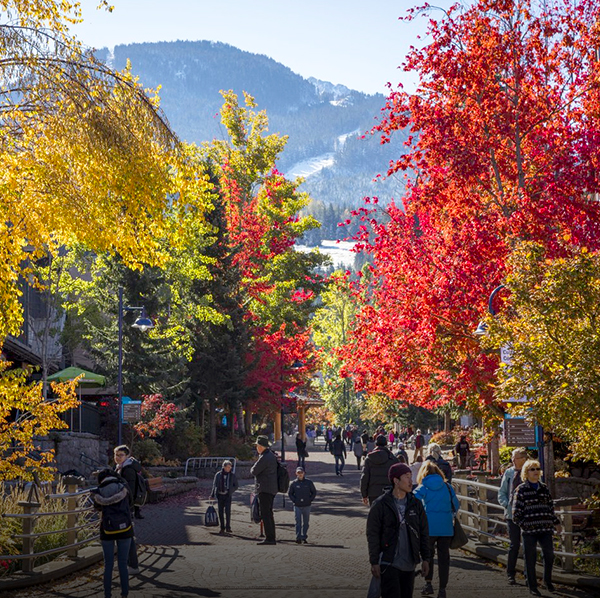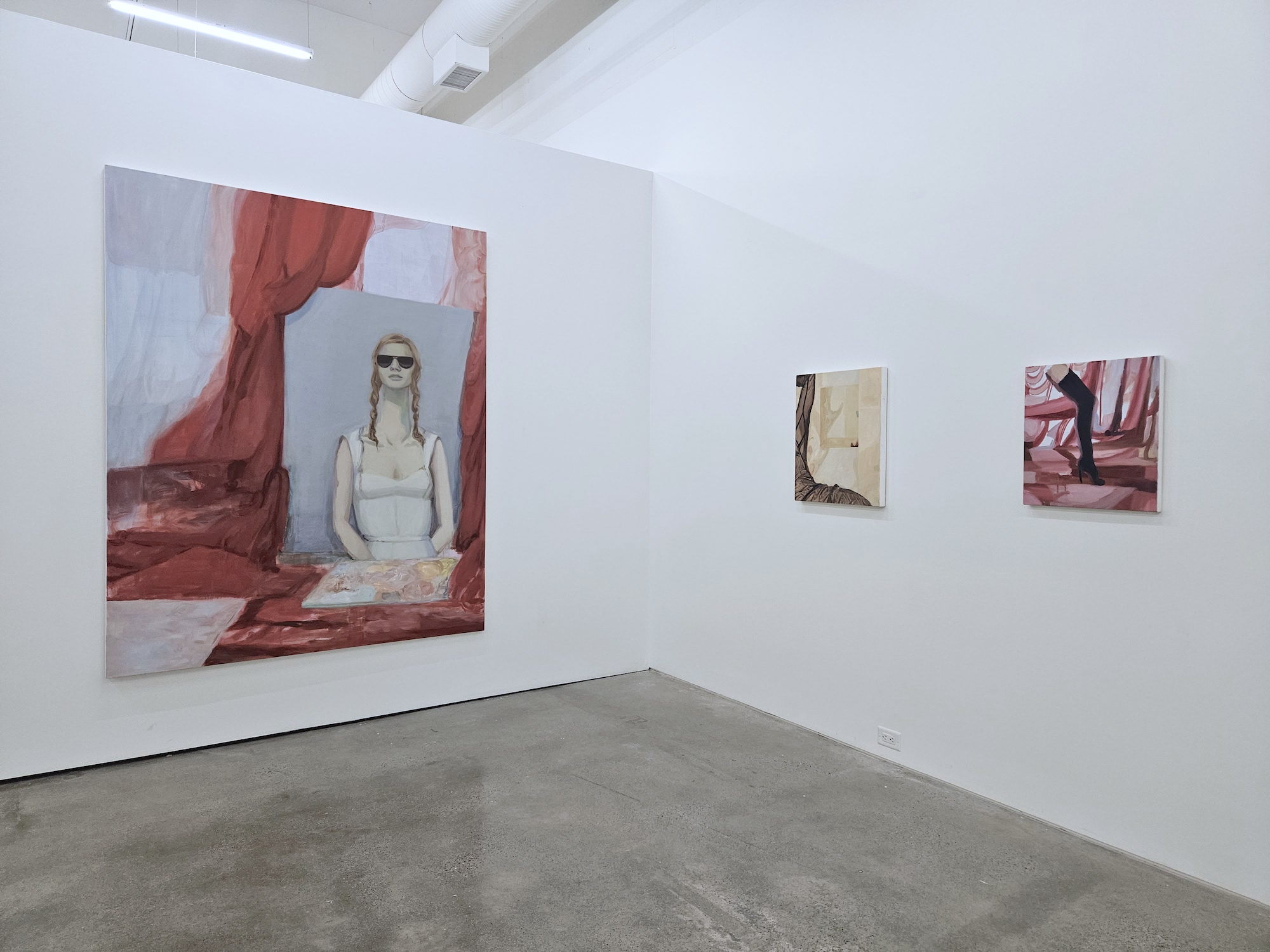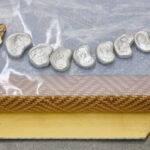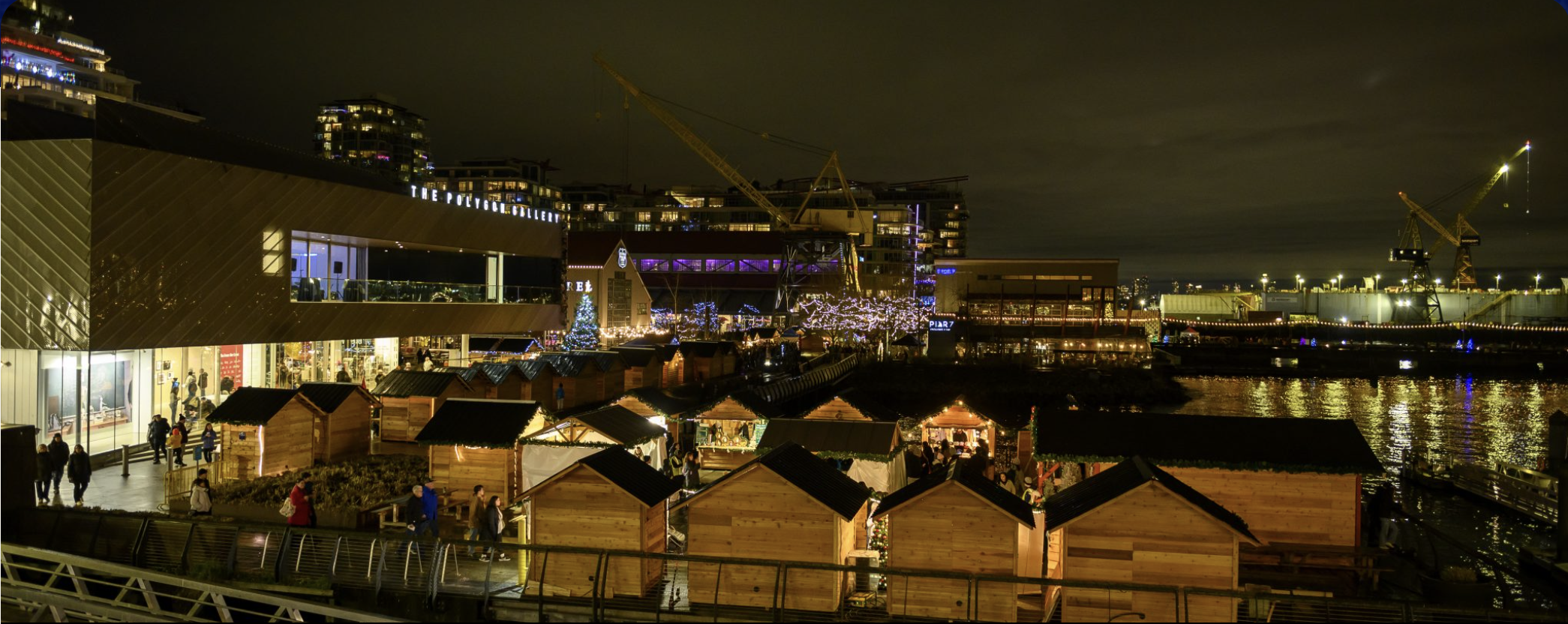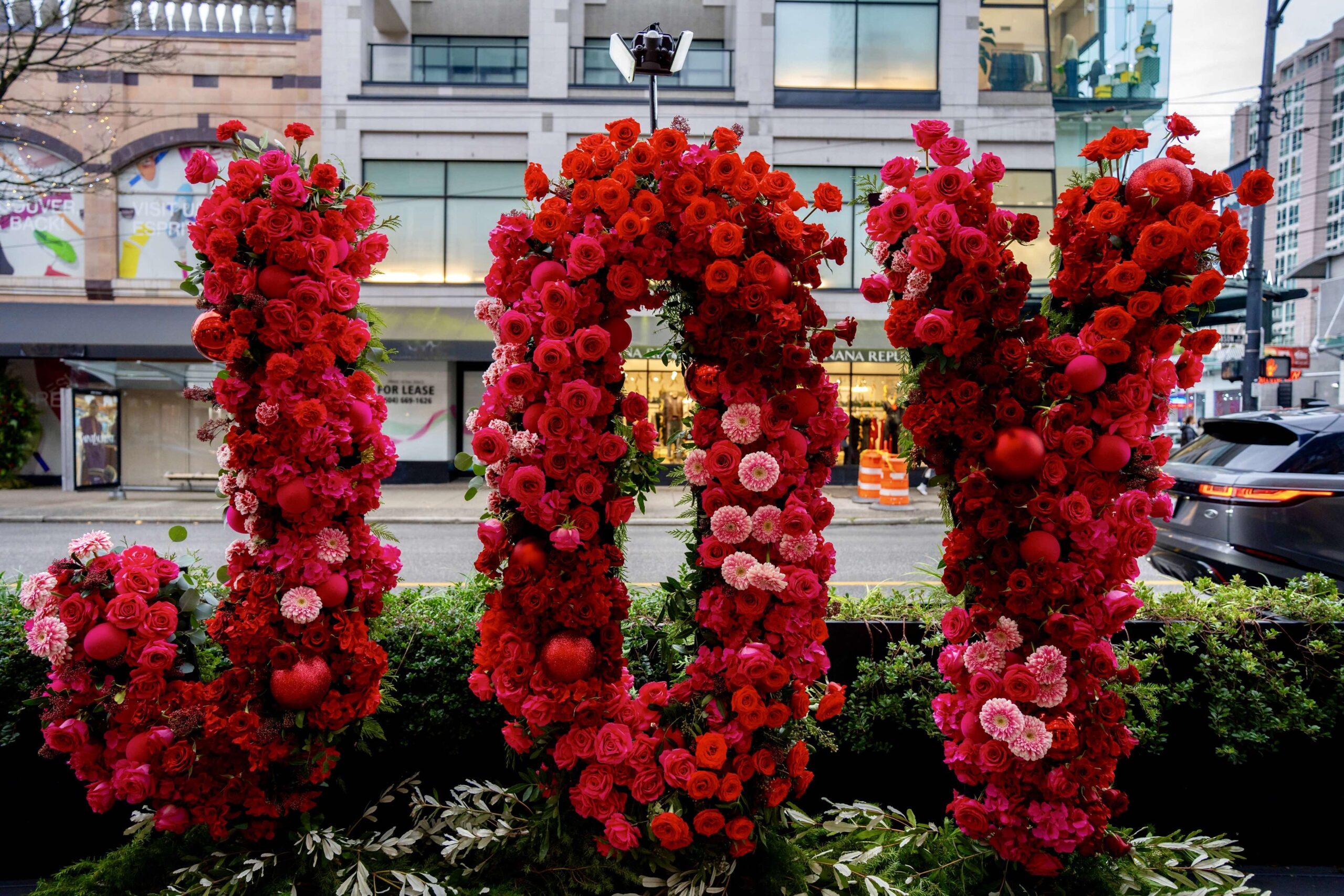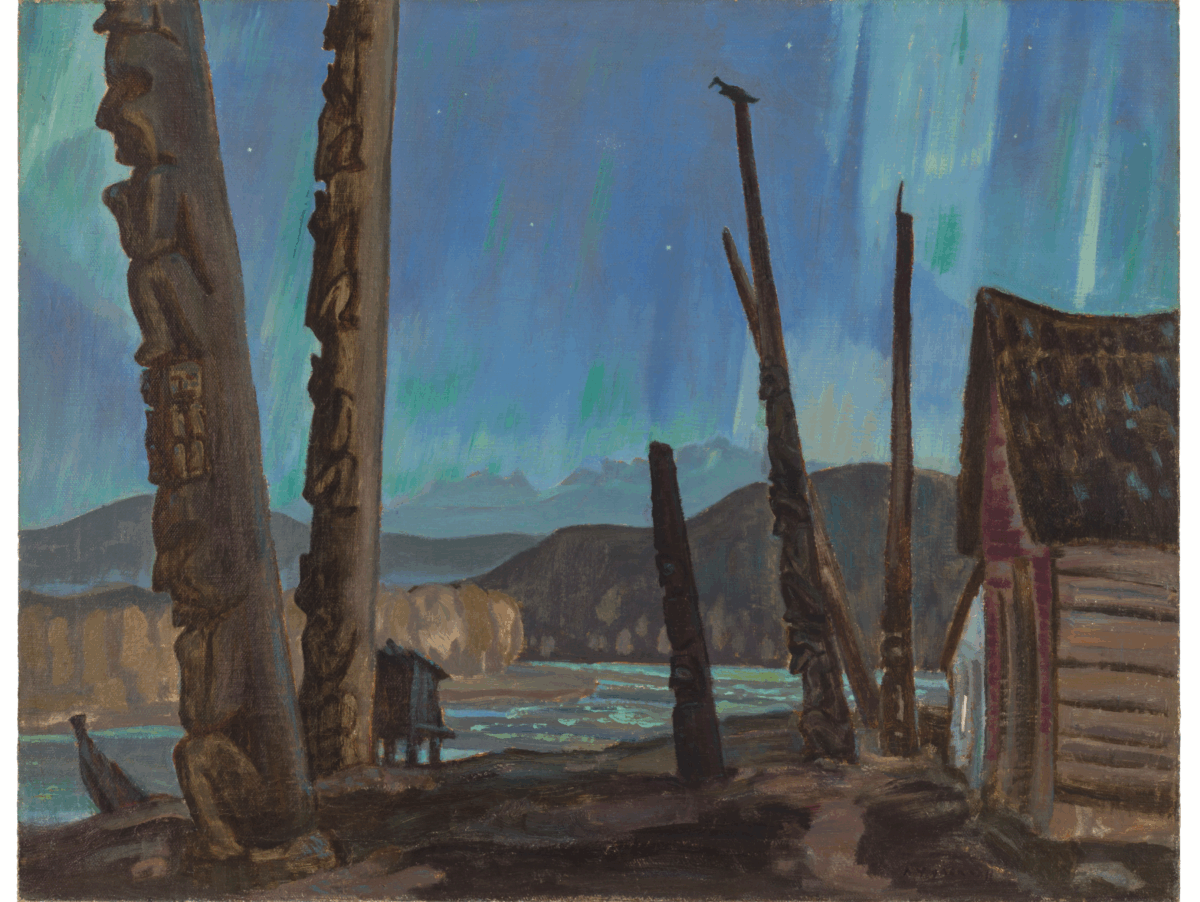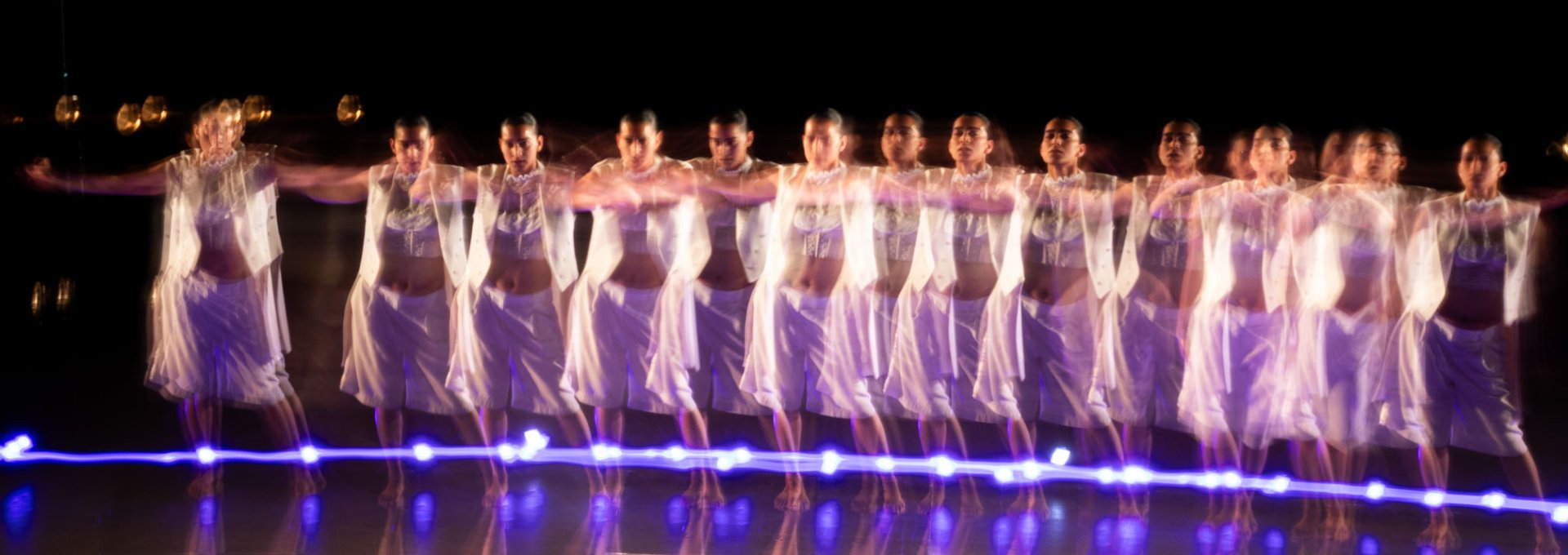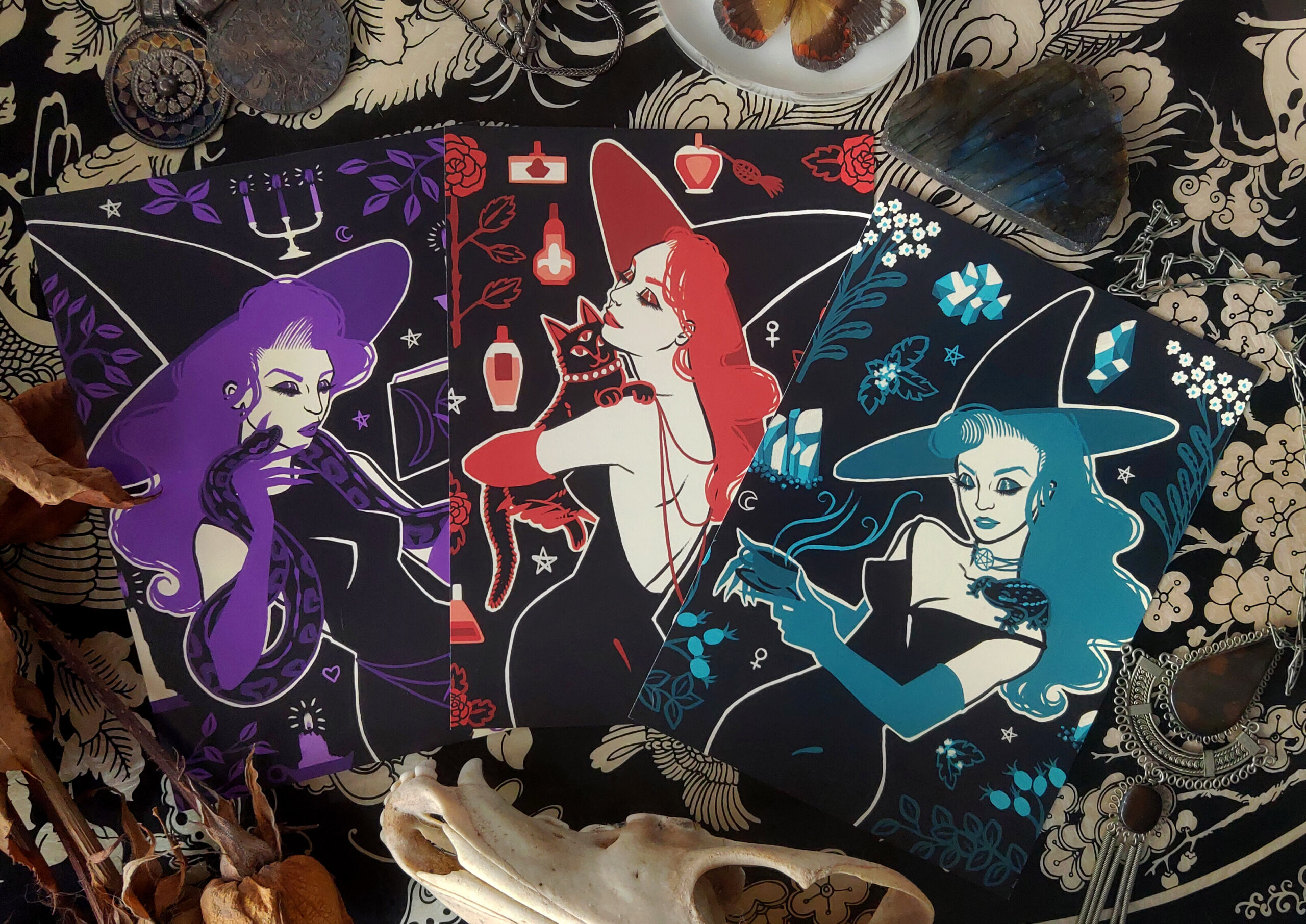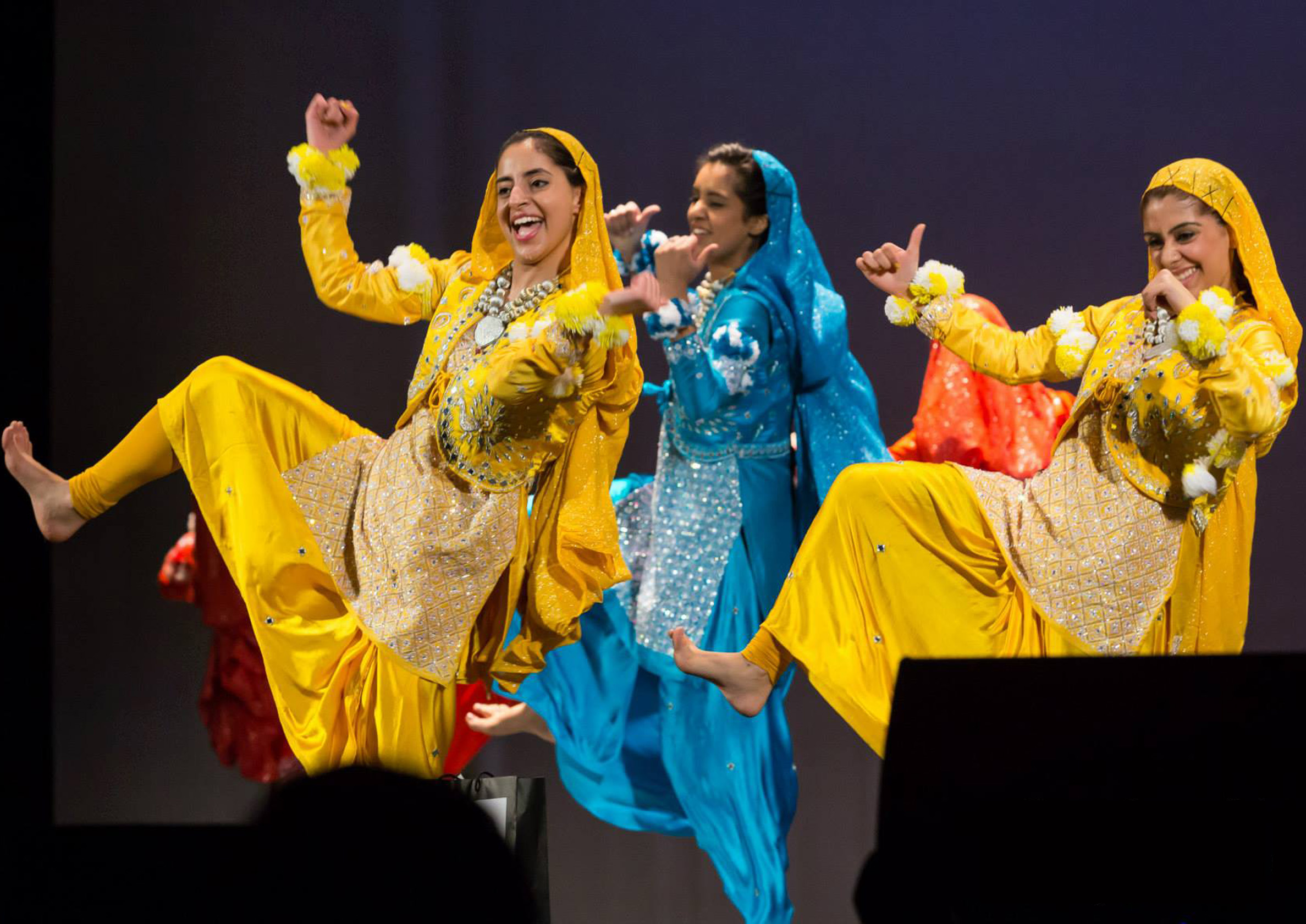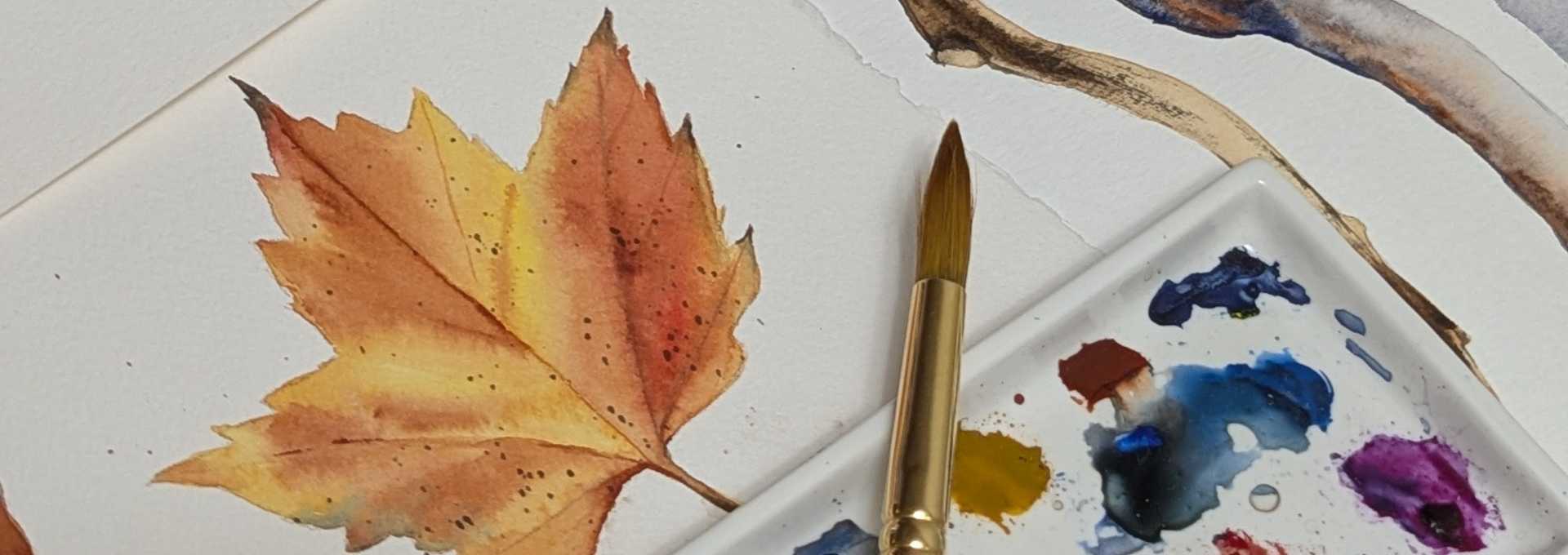Feature Image: Works by Janet Werner, installation view.
SHIFT at North Vancouver’s Griffin Art Projects considers art that uses textile and clothing as forms of knowledge and knowledge production, and, for emerging artist Jaewoo Kang, as a means of time travel.
By Kristin Lim
Curated by Griffin Art Projects Director Lisa Baldissera, SHIFT: Ecologies of Fashion, Form + Textile presents work across sculpture, painting, photography, and mixed media by seventeen Canadian and international artists. SHIFT includes an artist residency and performance by interdisciplinary artist, Jaewoo Kang, public programs, and an online conference coming up on October 21-22, 2023.
Entering the exhibition, viewers are confronted with Montreal artist Janet Werner’s large-scale Criss Cross on the title wall—a figure whose face is simultaneously depicted in profile and full-face, dressed in black with heavily blue-lined eyes. Several of Werner’s paintings—composite portraits of anonymous figures found from sources such as fashion magazines—feature prominently in the exhibition.
Moving through the gallery, there are photography works incorporating textile garments as subject, like Philipp Lachenmann’s Christina/Betty #2. Here, the artist recreated a Gerhard Richter painting, down to the fabric the artist’s daughter wore in the original work. In other works, fabric is employed as a medium, such as in Medrie MacPhee’s paint and textile collages If You Get There and Second Thoughts.
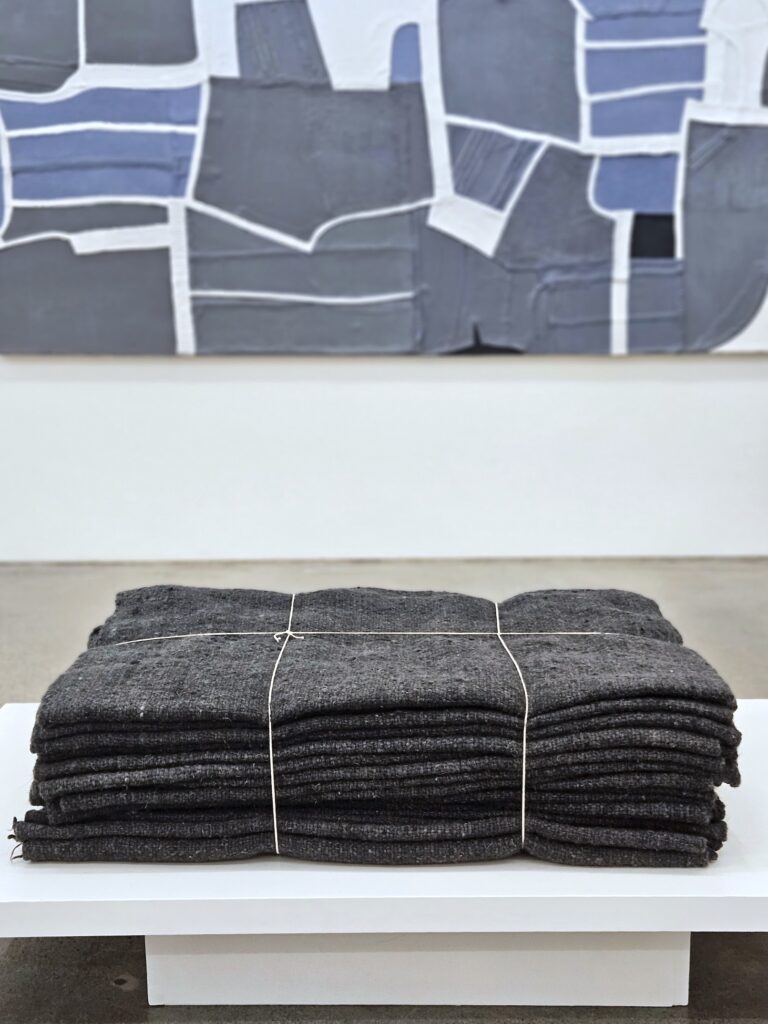
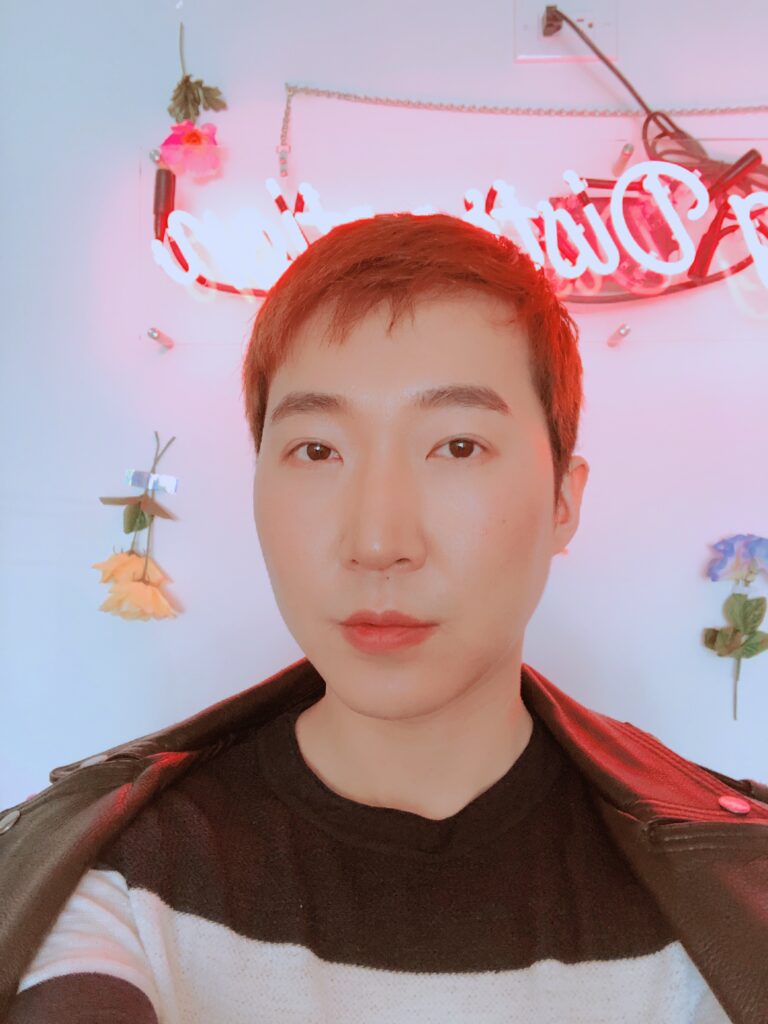
Textiles also appear as a support, as seen in Robert Rauschenberg’s Big Bud (Hoarfrost) and Deed (Hoarfrost), which are comprised of solvent transfers, cardboard, and paper on sheer fabric. Two of Brian Jungen’s well-known Nike Air Jordan sculptures, where deconstructed Air Jordans are reassembled to form Coast Salish ceremonial masks, are positioned in the centre of the gallery. Placed nearby is a sculpture by Liz Magor: KD – The Original, rucksack hanging on the wall, made of cast silicone rubber, with a pile of the recognizable orange powder and elbow macaroni on the ground below it.
Among the internationally established artists in a display case at the back of the exhibition are a few carefully selected components from Jaewoo Kang’s latest performance work, we meet (up down): a folded pair of pink Victorian-style breeches with gold buttons, three masks in marbled brown, pink, and green, and a tricorne hat made of papier mâché, encrusted with a salt-like substance.
we meet (up down) is the culmination of Kang’s three-month residency at Griffin Art Projects. The performance unfolds like a fashion show, in which masked models walk out into the gallery space in simple white smocks or men’s shirts, and one by one, taking garments from a clothes rack, they dress one another. Dance and country music form the soundtrack, with excerpts from Beyoncé’s “Break My Soul” and Lavender Country’s “Cryin’ These Cocksucking Tears” among other futuristic tracks.
The performance, which took place at the exhibition opening on September 16th, 2023, has passed. The objects from it displayed like artifacts in the exhibition, beg for more context. We reached out to the artist for the background story and to find out more about his residency and research in relation to we meet.
Kang is a queer Korean-Canadian artist whose practice lies at the intersection of film, visual art, and fashion. A major theme in his work is queer eroticism and how intimate moments with others can allow the self to have an introspective experience. His studies in film led him to work on costumes, which further led to his interest in exploring textiles, silhouettes, and gender. While drawn to theatricality and the desire to dabble in everything (script, lights, music, sets, and costumes), Kang describes his connection to fashion: “fashion has a special place in my heart because it has so much connection to queer history.”
During his residency at Griffin, Kang explored different things, ultimately, with the goal of finding a way to time travel. Recovering from the collective physical and psychological trauma of the pandemic, the artist explained: “it was impossible for me to move on to the next phase when I felt like the world as we knew it had been shattered. I wanted to look at a different timeline in history, future or past, to find people who experienced the end of the world, both literally and figuratively, which was not difficult to find as so many minority groups have experienced this. I wanted to find solidarity with those people and learn from their resilience and playfulness.”
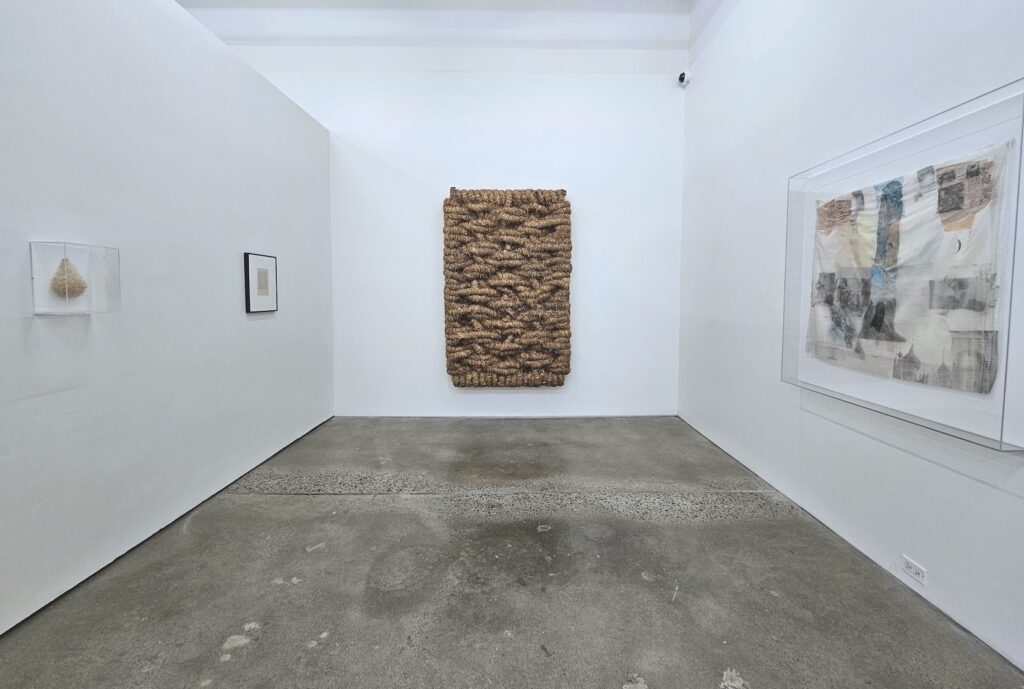
Kang immersed himself into learning about different stitching techniques, textile garments such as masks, breeches, net weaving, tricorne hats, and in particular, 18th century men’s shirts—the white smocks in the performance—as a way to metaphorically meet these people. “I chose this shirt because it functions as both outerwear and underwear,” says Kang. “I love that this shirt represents our romantic idea of period costumes but also gross aspects of our body, as well as our sexuality. That duality was a through line that connected various time periods and became an access point for me to time travel.”
The artist hand made each garment in the performance, as an attempt to learn about techniques from the past. “I was trying to understand how certain hand-stitching techniques were invented and changed over the course of history by the people who were making these shirts. I was also interested in the fact that these shirts were made with only squares, which means that there is no waste when you cut the fabric. And the type of stitching that they were doing also saved a lot of fabric, which goes to show how valuable textile was compared to now, and how different an approach we have to materiality compared to most of human history,” he explains.
Kang connects his research during his residency and the performance work: “Each character was inspired by historic or fictional characters that people might know. I wanted to build a bridge to people from different time periods and having these characters allowed me to escape our linear experience of time. Wearing a mask was a way for the performers to channel their characters. I did not want them to act or perform their characters—I wanted them to become their characters, physically.”
White smocks were often used as undergarments while bathing, and as the models walk into the gallery wearing only the white smocks, it is as though they are emerging into the space naked. One by one, each character is dressed with the help of other performers. The artist concludes, “As they are taken care of by other characters, they transform into their full persona to meet the audience.”
When asked about the choice to display only a few pieces from the performance instead of fully costumed mannequins or video documentation of the live event (which you can view on the artist’s website) for instance, Kang attributed the decision to Baldissera, to allow his work to be situated in relation to the other works in the exhibition.
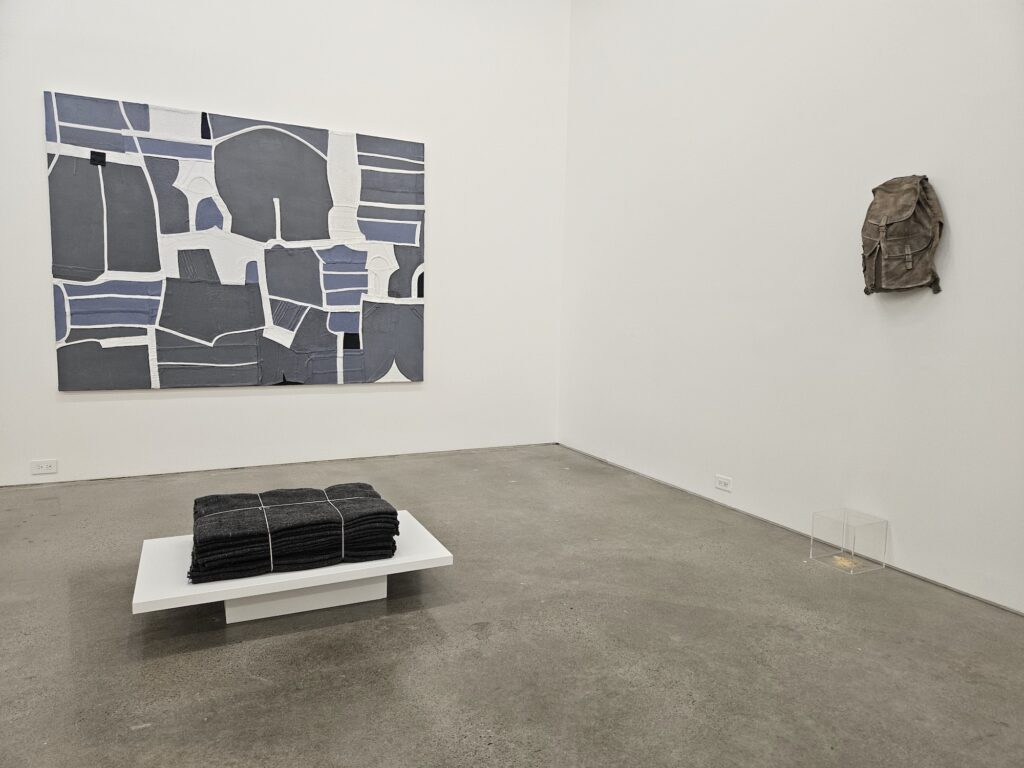
“For me, I find that the recontextualisation of our relationship to materiality the most interesting about the exhibition and I wanted to contribute to that conversation,” says Kang, expanding on the work. “I was really inspired by Jason Dodge’s Above the Weather [woven blankets, each crafted with 12 kilometers of yarn by craftspeople in several different countries in accordance with their local weaving traditions] and Olaf Holzapfel’s Lichtbild Atlas 4 [a sculpture of woven ropes made of hay] for their interpretation of traditional techniques, which caused me to have a visceral reaction to its smell, weight and texture. I was also intrigued by Brian Jungen and Philipp Lachenmann’s work and how characters play a role in their works. So we wanted to pull those elements from my work and showcase it as an archive of the performance to situate it in the larger conversation of the whole exhibition.”
Explore the exhibition further through an upcoming online conference, taking place on October 21 and October 22, 2023. Register for the free event here.
Join a Curator’s Tour with Lisa Baldissera on November 26, 2023 from 1-2 PM (in-person and online). Details here.
SHIFT is on at Griffin Art Projects (1174 Welch Street, North Vancouver) until December 10, 2023.
For more information, visit griffinartprojects.ca.
Bus: R2, 236, 240For more information, please see TransLink’s Trip Planner.
